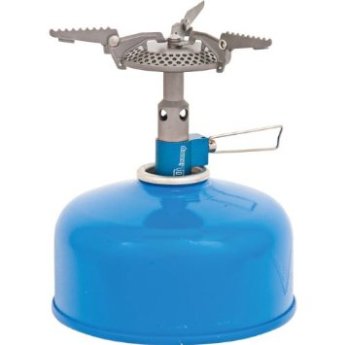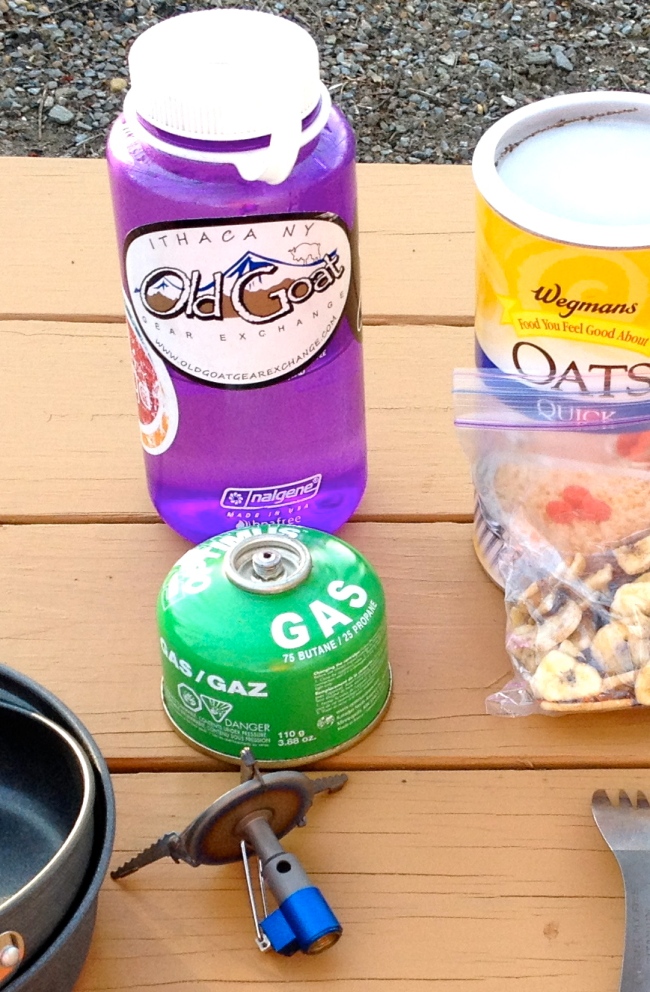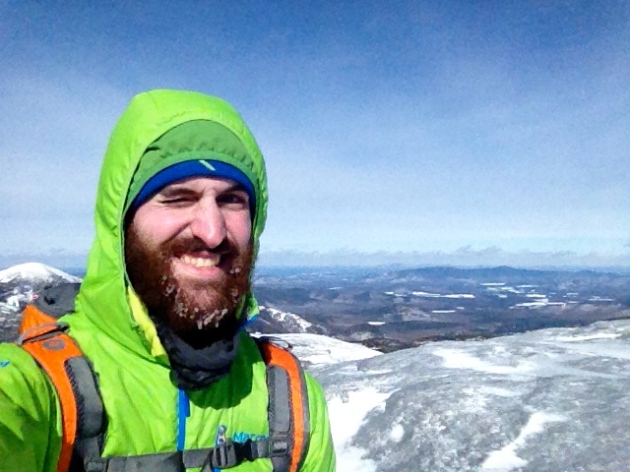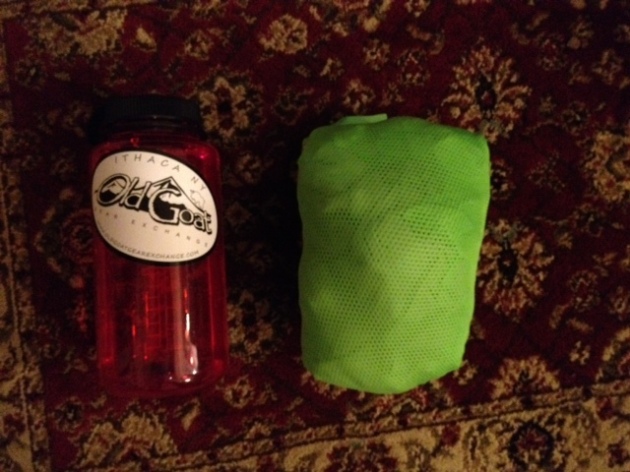Living in Ithaca, NY, a solid 3/4 of my trail runs occur (1) In the rain, (2) In snow, or (3) In the mud (due to #1 and #2). After experimenting with lots of shoes–and slipping around a lot–I decided to try out Inov8’s Baregrip shoes, a wonky specialty piece of gear for minimalist runners looking for maximum traction.
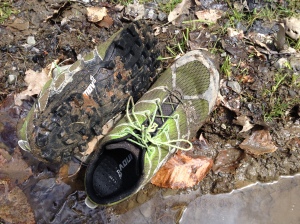
First off, the Baregrips are amazingly light-weight for being such a durable shoe–weighing in at 7oz’s, these could almost be used as camp shoes when backpacking (haven’t tried it yet!). These shoes are likely so light in part due to their super-breathable mesh upper. While many folks who are likely to encounter mud/water may want a Goretex liner in a shoe, Inov8 was smart in aiming for fast draining-and-drying over waterproofing, which would only be less breathable and an equally futile line of defense against wetness. From my experience, after full submersion in a creek they drained out in about a minute. While the mesh is excellent in warm temperatures, be careful if you opt for these in the winter–wet feet and cold temperatures may be a recipe for disaster. Speaking of which, wear socks with these guys: while I love running sockless, there is a seam between the heel-cup and the mesh upper that might be bothersome. Honestly though, conditions that warrant wearing Baregrips will also warrant socks and possibly gaiters to manage debris anyway.
Continuing to look at the upper, the metatarsal cage gives this shoe a perfect fit when the laces are snugged up tight, which is an added bonus when you’re tramping through shoe-sucking mud.
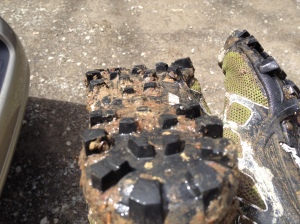
Now, it’s the sole that makes this shoe really stand out: the super aggressive lugs dig amazingly into mud, loose dirt, snow, and slush. On dry sections/hard rock, the lugs may cause pressure points on your feet (one user I know actually grinded a particularly bothersome down with a Dremel), but I found it manageable on short stretches. And that’s the key: these shoes should only be worn when your run will be 80% muddy/wet/loose. If you know you’ll be on more than a mile or two of dry stuff, odds are there might be a better shoe for that day’s run.
The fit is the only place I had an issue. I noticed that the shoes are on the narrow side, and that the toe-box is not as typically wide as the average zero-drop shoes. Now, none of this bothered me, as I have slim feet and like a snug shoe. What does drive me absolutely nuts is the tip of the shoe, which another equally frustrated runner described as an “elf shoe point.” Here’s the thing: the shoes fit me in a 10.5, which is pretty universally my shoe size in almost every brand; my feet don’t shift around at all when I tie them up, but there is definitely a weird taper to the toe that leaves space. Now, this space hasn’t caused any shifting, instability ,or blisters, but has snagged me up: a centimeter is the difference between clearing a root and landing flat on your face. This becomes especially pronounced on steep up hills, and near the ends of run when I’m tired and not particularly eager to lift my feet super high. I’d like to try them out again in a size 10 and see if they fit better, but no matter what be wary of the size. I recommend buying these shoes from a vendor where they can be swapped for a different size: you don’t have to run in them to know, just check the toe when you put them on.
The verdict: if you run in muddy places, and I mean MUDDY, or are into those mud-run obstacle course races, this might be a great shoe for you. Just watch out for the sizing. While I do like these shoes, a few months of running has shown I can likely make due with another pair of shoes in muddy conditions. They might shine in soft snow this winter, but even then the fear of ice will likely necessitate yaktrax.
————————————————————
Written by Chris, who is always slightly amused at how many shoes he owns in spite of being known as a “barefooter.”
